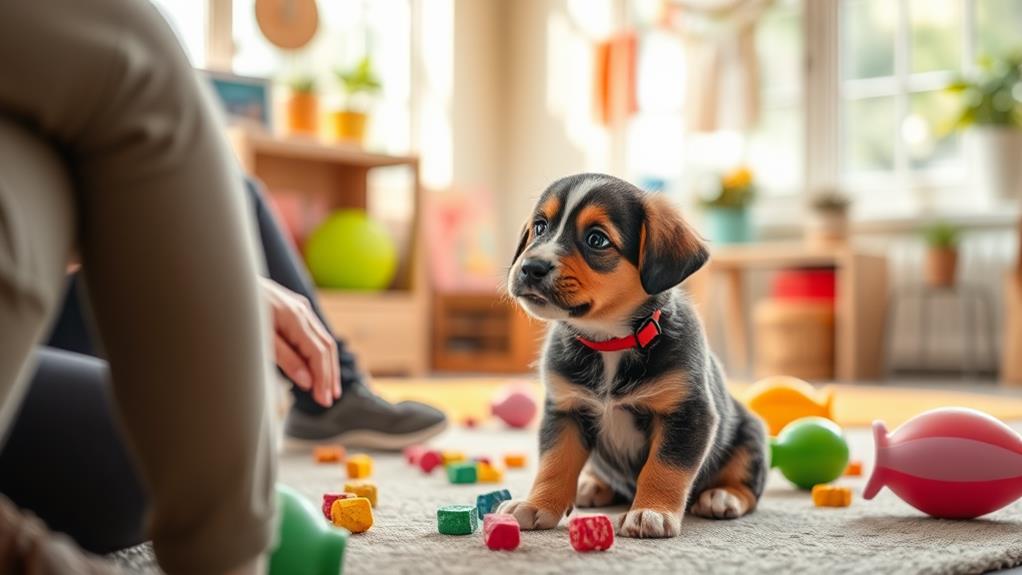Tackling puppy behavior challenges during training starts with understanding their instincts. Use chew toys to redirect their urge to munch and yelp to signal nipping. Consistency is vital—set clear commands and stick to them. Reward desired behaviors with treats or praise and provide plenty of mental stimulation to curb boredom-related issues like excessive barking. Expose your puppy to various experiences for socialization, helping them build confidence and manners. Address any aggression or fear gradually. With patience and the right techniques, you'll see progress. There's plenty more to explore to help you on this journey!
Understanding Common Puppy Behaviors
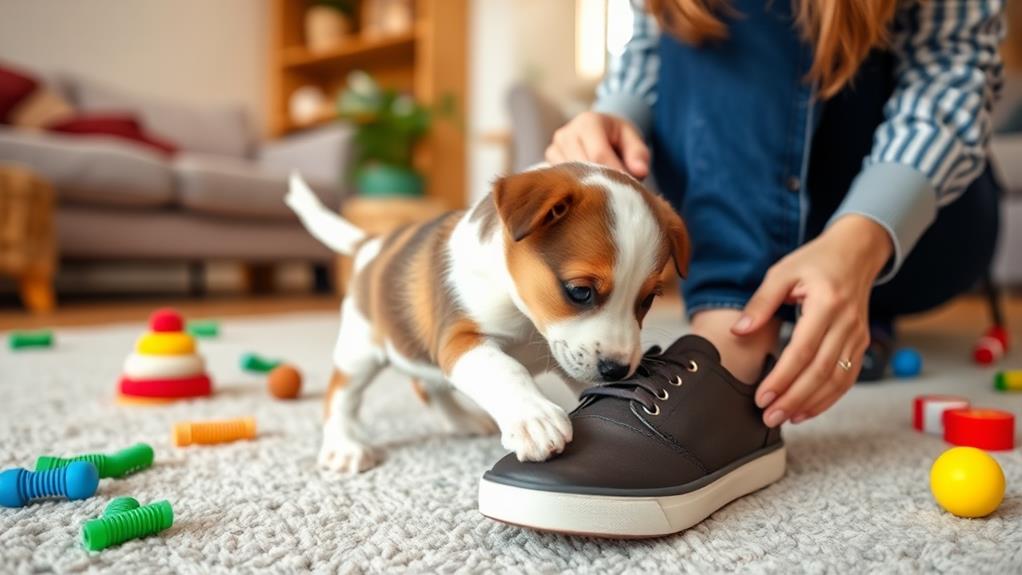
Puppies are bundles of energy, and understanding their behaviors is key to successful training. You'll notice that they explore the world through their mouths, which is why they chew on everything. Redirect this behavior by providing appropriate chew toys and praising them when they use them.
Another common behavior is nipping, especially during play. Puppies often nip as a way to engage, but it's crucial to teach them that this isn't acceptable. Yelping or stopping play can signal to them that they've gone too far.
House training is another challenge. Expect accidents; it's part of the process. When you catch your puppy in the act, gently redirect them outside. Praise them once they finish outside; positive reinforcement works wonders.
Barking can also become an issue. Puppies bark to communicate, alert, or release energy, so it's indispensable to determine the cause. If it's boredom or anxiety, providing mental stimulation and exercise can help reduce excessive barking.
Importance of Consistency in Training
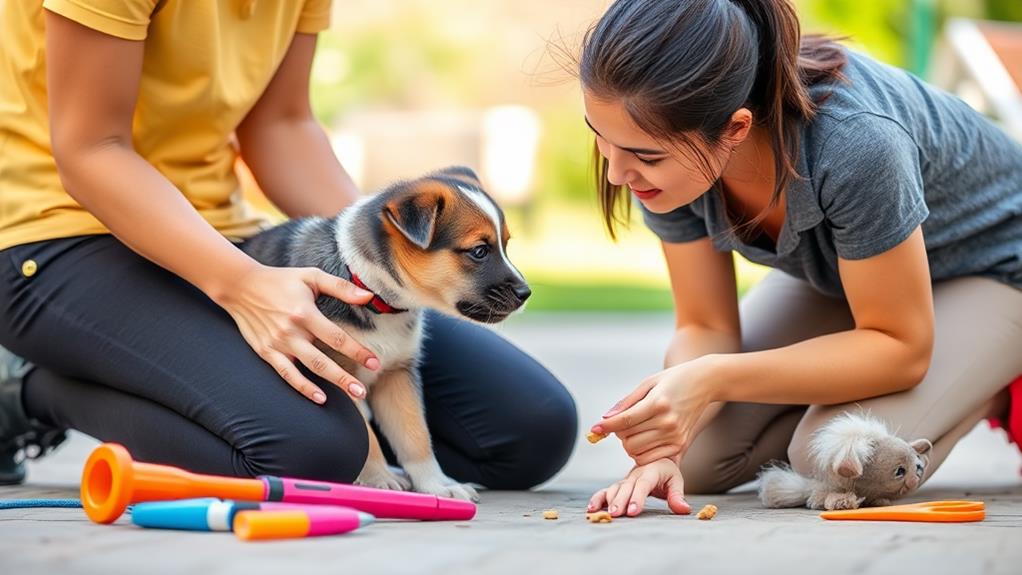
Consistency in training is indispensable for helping your puppy learn and adapt to the rules of your home. When you establish a clear set of commands and expectations, your puppy will feel more secure and understand what's required of them. If you're inconsistent—sometimes allowing behaviors and other times correcting them—your puppy will become confused and may develop bad habits.
Set clear boundaries and stick to them. If you decide that jumping on the furniture is off-limits, make certain everyone in the household follows that rule. Using the same commands consistently will also reinforce your puppy's understanding. For instance, if you use "sit" one day and "down" the next for the same action, your puppy will struggle to grasp what you want.
Additionally, consistency in timing is pivotal. Rewarding or correcting your puppy immediately after the behavior helps them connect the action with the consequence. Regular training sessions at the same time each day will also help establish a routine, making it easier for your puppy to learn. Remember, your commitment to consistency lays the groundwork for effective training and a well-behaved companion.
Positive Reinforcement Techniques
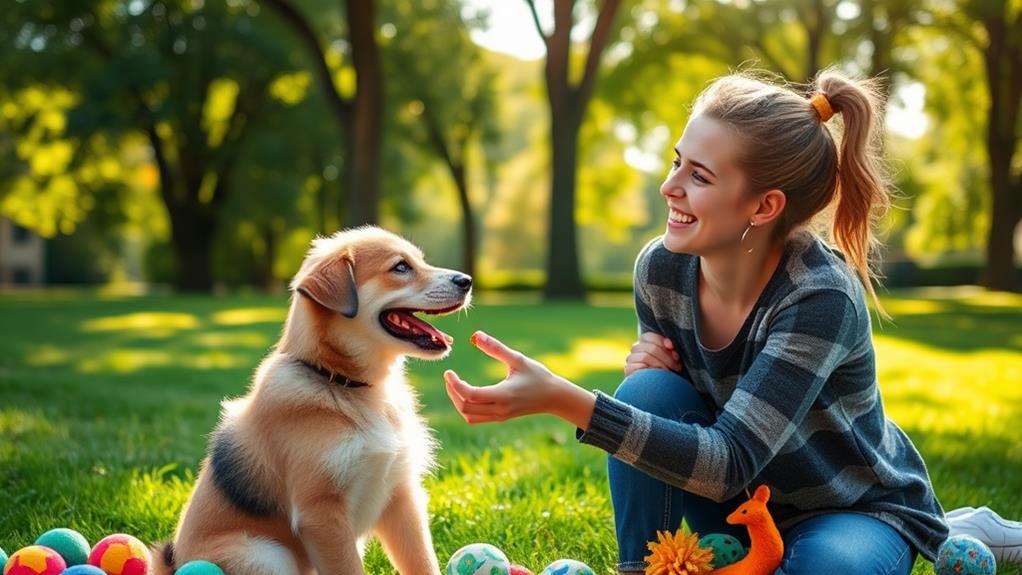
Building on the foundation of consistency, positive reinforcement techniques are a powerful way to encourage desirable behaviors in your puppy. By rewarding your pup immediately after they perform a desired action, you help them connect the dots between their behavior and the reward. This approach not only motivates your puppy but also strengthens your bond with them.
Here are some effective positive reinforcement techniques you can use:
- Treats: Use small, tasty treats that your puppy loves to reward them instantly.
- Praise: Verbal praise or a happy tone can make your pup feel appreciated and encouraged.
- Toys: If your puppy enjoys playing, use a favorite toy as a reward for good behavior.
- Affection: A gentle pet or scratch behind the ears can go a long way in making your puppy feel loved.
- Playtime: Engaging in a quick game or a fun activity as a reward can reinforce your puppy's good behavior.
Incorporating these techniques into your training routine will lead to a more responsive and well-behaved puppy, making your training journey enjoyable for both of you.
Socialization and Its Benefits
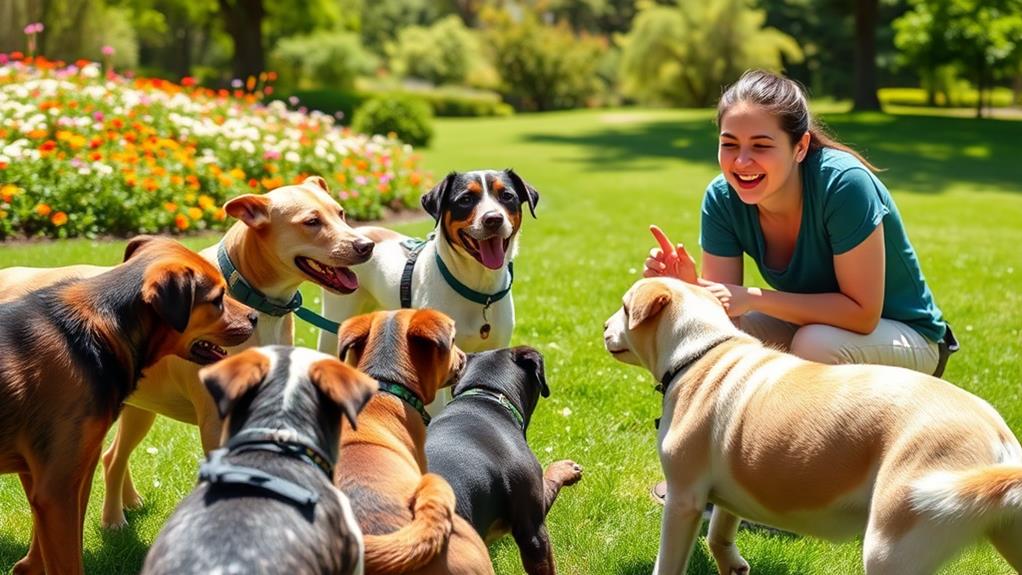
Introducing your puppy to a variety of experiences, people, and other animals is essential for their development. Socialization helps your puppy learn how to interact appropriately with the world around them. When you expose them to different environments, sounds, and smells, they become more adaptable and confident.
Start by inviting friends over or taking your puppy to dog parks where they can meet other dogs. Positive encounters during this critical period can shape their behavior for a lifetime. You'll notice that well-socialized puppies are typically more comfortable in unfamiliar situations and less likely to develop fear-based behaviors.
Additionally, socialization can help reduce anxiety and promote better manners. When your puppy learns to interact positively with various stimuli, they're less likely to react negatively later on. Remember to keep experiences positive and rewarding, using treats and praise to reinforce good behavior.
Addressing Aggression and Fear
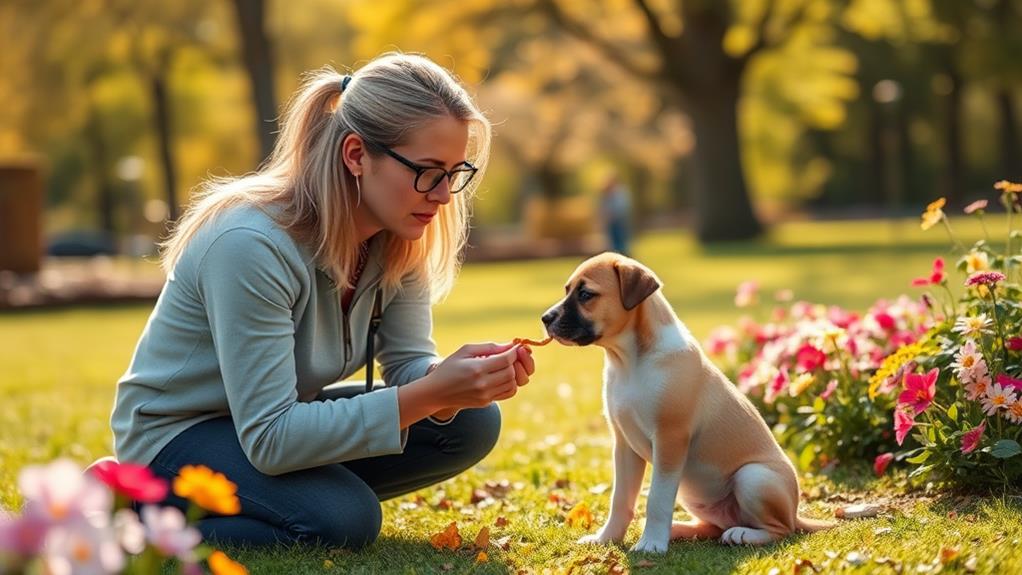
Aggression and fear in puppies can stem from a lack of socialization or negative experiences. It's vital to identify the root cause of these behaviors early on, so you can help your puppy feel safe and secure.
Start by exposing your puppy to new environments and experiences gradually. This will build their confidence and reduce their fear response.
Positive Reinforcement: Reward calm behavior with treats or praise to encourage a positive association.
Controlled Exposures: Introduce your puppy to new people, pets, and situations in a controlled manner to prevent overwhelming them.
Desensitization: Gradually expose your puppy to their fears, allowing them to adjust at their own pace.
Training Classes: Enroll in puppy training classes to enhance social skills and provide structure.
Consult a Professional: If aggression persists, seek help from a certified dog trainer or behaviorist.
Managing Excessive Barking
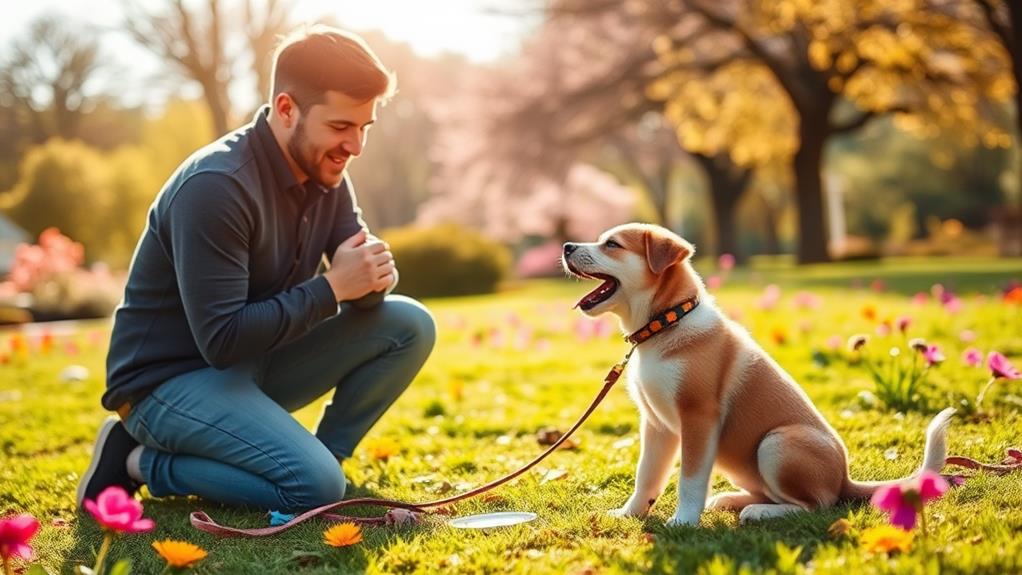
Excessive barking can be a frustrating issue that often arises from a puppy's need for attention, fear, or boredom. To manage this behavior, start by identifying the triggers. Pay attention to when your puppy barks—is it at strangers, other animals, or simply to get your attention? Understanding the cause is pivotal.
Once you've identified the triggers, you can work on addressing them. For attention-seeking barking, try to ignore your puppy when it barks and reward them with praise or treats when they're quiet. This teaches them that silence gets your attention, not barking.
If fear is the cause, gradually expose your puppy to the source of their fear in a controlled manner, rewarding calm behavior. For boredom, increase their exercise and mental stimulation through walks, playtime, and puzzle toys.
Consistency is key. Make sure everyone in your household follows the same rules regarding barking. It may take time, but with patience and training, you'll help your puppy learn when it's appropriate to bark and when it's best to be quiet. This will lead to a more peaceful home for both you and your furry friend.
Dealing With Chewing and Destruction
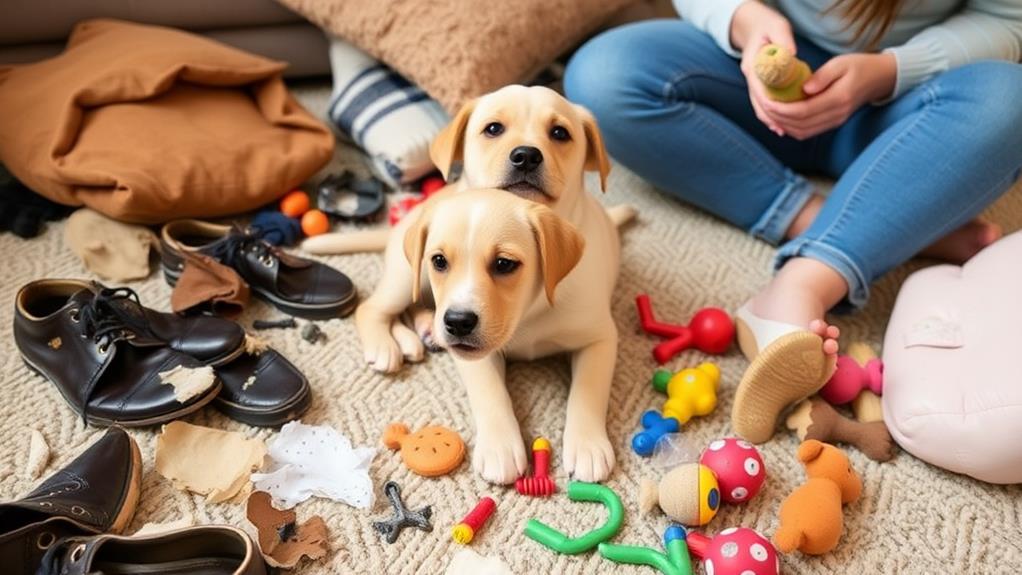
Many puppies go through a phase of chewing and destruction, which can be both frustrating and damaging to your belongings. It's important to address this behavior early on to prevent long-term habits.
Provide appropriate chew toys: Invest in durable toys that satisfy their natural urge to chew.
Rotate toys regularly: Keep things interesting by switching toys out frequently to hold their attention.
Redirect their focus: When you catch your puppy chewing on something they shouldn't, immediately redirect them to an appropriate toy.
Use taste deterrents: Apply safe, bitter-tasting sprays on furniture or objects to discourage chewing.
Increase exercise and mental stimulation: A tired puppy is less likely to chew destructively. Engage them in play or training to burn off energy.
Overcoming Potty Training Challenges
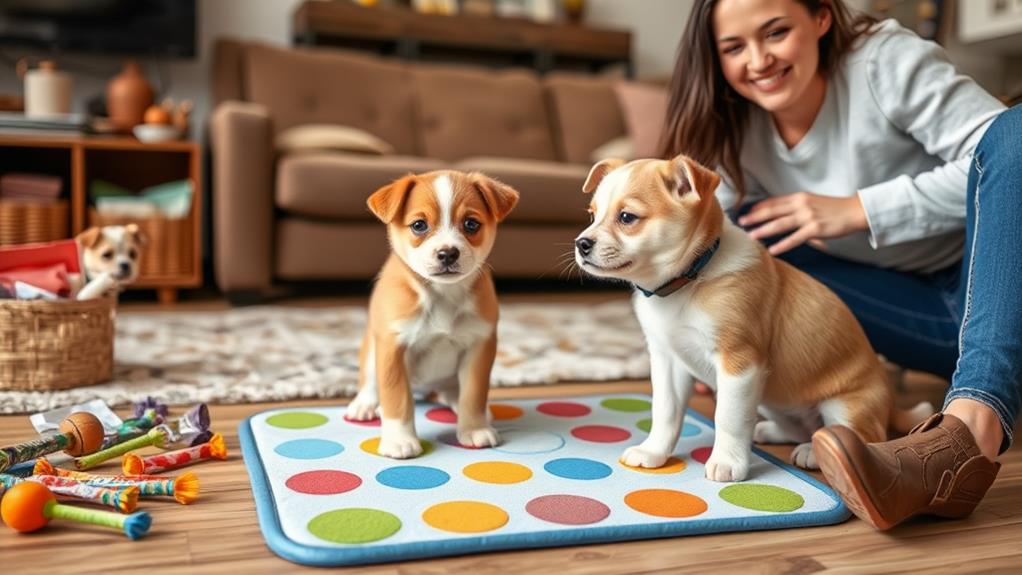
Potty training can be one of the most challenging aspects of raising a puppy, but with patience and consistency, you can overcome these hurdles. Start by observing your puppy's natural patterns. Puppies usually need to go after eating, drinking, or waking up. By keeping a close eye on them, you can anticipate when they need to relieve themselves.
When you notice signs that your puppy needs to go, take them outside immediately. Use a specific command, like "go potty," to create an association. Praise and reward them with treats when they do their business outside. This indispensable reinforcement is crucial for reinforcing good behavior.
Accidents will happen, and that's okay. When they do, avoid scolding your puppy. Instead, clean up the mess thoroughly to eliminate any lingering odors that might encourage repeat offenses. If you catch your puppy in the act, gently interrupt them and take them outside.
Consider using a crate for training. Puppies naturally avoid soiling their sleeping area, making crates an effective tool when used correctly. With time, your puppy will learn where it's appropriate to go, turning potty training into a success story.
Establishing a Training Routine
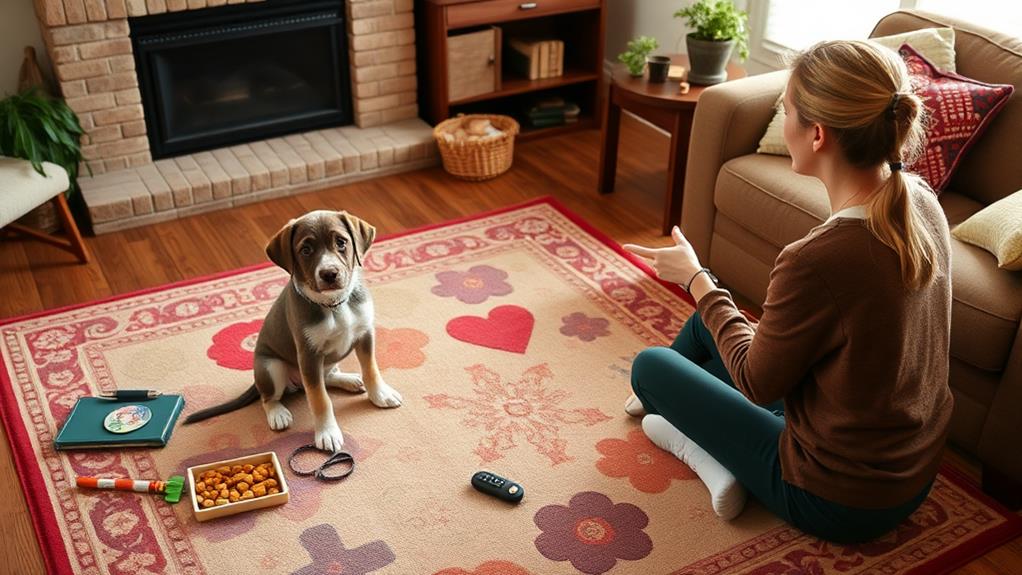
A consistent training routine is essential for shaping your puppy's behavior and reinforcing good habits. Establishing a schedule not only helps your puppy learn but also strengthens your bond.
Set Specific Times: Choose regular times each day for training sessions. Consistency helps your puppy anticipate and engage in training.
Keep Sessions Short: Aim for 5-10 minute sessions. Puppies have short attention spans, so brief and focused training will be more effective.
Incorporate Play: Use playtime as a reward after training. This reinforces positive behavior and keeps your puppy motivated.
Use Clear Commands: Stick to simple commands and be consistent with the words you use. This helps your puppy understand what you expect.
Be Patient and Positive: Always approach training with patience. Celebrate small victories to encourage your puppy and foster a positive learning environment.
Frequently Asked Questions
How Do I Handle Puppy Training Setbacks Effectively?
When you face training setbacks, stay patient and consistent. Identify specific issues, adjust your techniques, and celebrate small victories. Remember, every challenge is an opportunity for growth, both for you and your puppy.
When Should I Start Training My Puppy?
You should start training your puppy as soon as you bring them home. Early training helps establish good habits, strengthens your bond, and makes future challenges easier. Consistency and positive reinforcement will yield the best results.
What Age Is Best for Socializing Puppies?
Did you know that 85% of a puppy's personality develops by six months? You should start socializing your puppy around that age, as early experiences shape their confidence and behavior in future interactions with others.
How Can I Keep Training Sessions Engaging?
To keep training sessions engaging, mix up activities, use treats, and incorporate play. Keep sessions short and positive, rewarding your puppy's progress. Vary locations to maintain interest and stimulate their curiosity throughout the learning process.
Should I Seek Professional Help for Behavioral Issues?
Did you know that 60% of dog owners seek professional help for behavioral issues? If you're struggling, it's wise to consult a trainer. They can provide tailored strategies to address your concerns effectively and safely.
Conclusion
In the delightful journey of puppy training, remember that every little challenge is just a stepping stone to a well-behaved companion. With a sprinkle of patience and a dash of love, you'll transform those mischievous moments into precious memories. Embrace the quirks, celebrate the progress, and stay consistent in your approach. Soon, you'll find your furry friend blossoming into the perfect partner, turning those pesky behaviors into charming traits that bring joy to your life.

